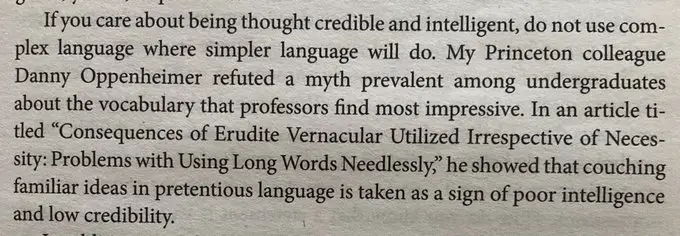Sesquipedalianism is a linguistic style that involves the use of long words. It might be characterised as polysyllabic holophrastic verbalism.
Wikipedia
Some well-known authors advise against making use of words which draw attention to themselves.
Words in prose ought to express the intended meaning; if they attract attention to themselves, it is a fault; in the very best styles you read page after page without noticing the medium.
SAMUEL TAYLOR COLERIDGE
Then you have the opposite view:
Excess on occasion is exhilarating. It prevents moderation from acquiring the deadening effect of a habit.
W. SOMERSET MAUGHAM
Some authors draw deliberate attention to words as a matter of style and as part of character-building.
An example of a character in children’s literature who speaks in a wordy style is Owl, from Winnie-the-Pooh, who tries (in vain) to make himself sound intelligent.

Saki (H.H. Munro), the short story writer, made use of highfalutin prose; this was his style, and it serves to amplify the effete lives of his characters.
Without running all the way to sesquipedalianism, authors often make use of an articulate narrator in order to tell a story. Child and young adult first-person protagonists often show extraordinary insight of the kind they couldn’t possibly have. They make use of wide vocabularies, they write clearly and with mature insight. Of course, they must. Anything less wouldn’t be worth reading. Readers expect this from a book — this is an amazing story and that’s why it’s been made into a book. But every now and then, if we as readers think too hard about it, the maturity of a young narrator fails to draw us into the fictional world of the story.
This is an excerpt of a review, from someone who doesn’t like Inkheart, a YA fantasy novel (widely loved by many):
I think it’s a case of the author not wanting to be limited by a 13 year old’s language and perceptions, so he’s come up with the excuse that the boy is smart and loves learning new words. It’s not just the language either, it’s also the character’s mature insights into how the world works, insights that only come with age and experience.
So there we have it, the children’s author’s tightrope: Narrators who are smart and articulate, but not too smart. Literary critics call this dilemma ‘double address‘.
There are ways of getting around it. One of those ways is ‘consonant psychonarration’ (figural).
This means that there’s little privilege on the narrator’s part. The narrator doesn’t know much that the child protagonist doesn’t either. One author who is well-known for doing this well is Katherine Paterson, who wrote Bridge To Terabithia.
Mark Haddon also does consonant psychonarration very well by making use of a narrator on the autistic spectrum.

